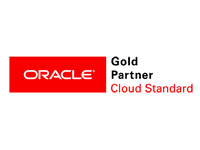Blog
Oracle Autonomous Analytics Cloud: Letting You Focus More on Analytics and Less on the Cloud
Lately, it seems every conversation with a potential customer of Oracle Analytics Cloud leads to a point where there is a realization that, as a Platform as a Service offering, OAC will still require a BI Administrator type of role to manage not only the application and its metadata artifacts, but also to manage the patching and resource allocation for the servers and services that supports the application. Inevitably, this leads to having to take a step back and clearly explain the difference between the Software as a Service (SaaS) and Platform as a Service (PaaS) offerings (if you would like a refresher, click here to read my recent blog post discussing the key differences).
In most cases, this is an enlightening moment for the client, but not a deal breaker. In a few rare cases, however, it has led to great strife for the client who was depending on OAC to reduce reliance on technical resources to maintain their BI Tools to the point where it actually makes them second guess the tool as a solution.
If you read that last sentence and felt any familiarity, Oracle has good news for you.
Oracle recently released Oracle Autonomous Analytics Cloud , a new Analytics Option that effectively delivers the same tools and functionality as OAC , but in a model that bends towards the SaaS end of the spectrum compared to OAC: in OAAC, Oracle owns and maintains the back end while you own all of the metadata that makes up the data models and subject areas as well as the reports and dashboards. It's important to note that Oracle still classifies OAAC as a PaaS offering, even though the main differentiator at this point is Oracle having taken ownership of those administration and maintenance tasks that are left to the client in OAC . A BI Administrator is still required to maintain the data models, data connections, subject areas, and all of the metadata configurations of your environment, but they no longer need to stay on top of the infrastructure pieces and components to be sure they're all working and using the latest patch sets.
"Autonomous" seems to have replaced "Cloud" as Oracle's newest buzzword for their product offerings. We've known about the autonomous data warehouse for a while now, but Autonomous Analytics seems to have cropped up in relatively short order. The promise of the autonomous products goes well beyond simply automating the backend patching other environment related tasks. OAAC hopes to leverage the machine learning modules already in place within the various versions of Data Visualizer as well as any future developments which allow the systems to predict needs and employ solutions without being asked.
For now, though, the "Autonomous" in OAAC focuses on solving the complaint from many within the OAC community regarding the back end architecture and who owns it, and allowing clients to focus on the data and the intelligence produced by the OAC tools without requiring IT resources.
Looking at Oracle's page on OAC/OAAC , they are already placing OAAC as the primary option for analytics tools going forward. Much as OAC took over as the primary tool being invested in and developed Post-BICS, it appears that OAAC is the primary tool set going forward from here on out.
Contact MindStream Analytics
Want to know more about Oracle Autonomous Analytics Cloud? Please complete the form below and we'll get back to you shortly.
Partner SpotLight

Built using best in class hardware, market- leading business intelligence software and in-memory database technology, Oracle Exalytics is an optimized system that delivers speed of thought analysis with unmatched intelligence, simplicity and manageability. For customers evaluating Oracle Exalytics, MindStream Analytics houses an Oracle Exalytics machine dedicated to 'sandbox' environment testing.
